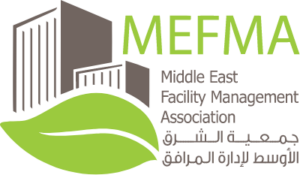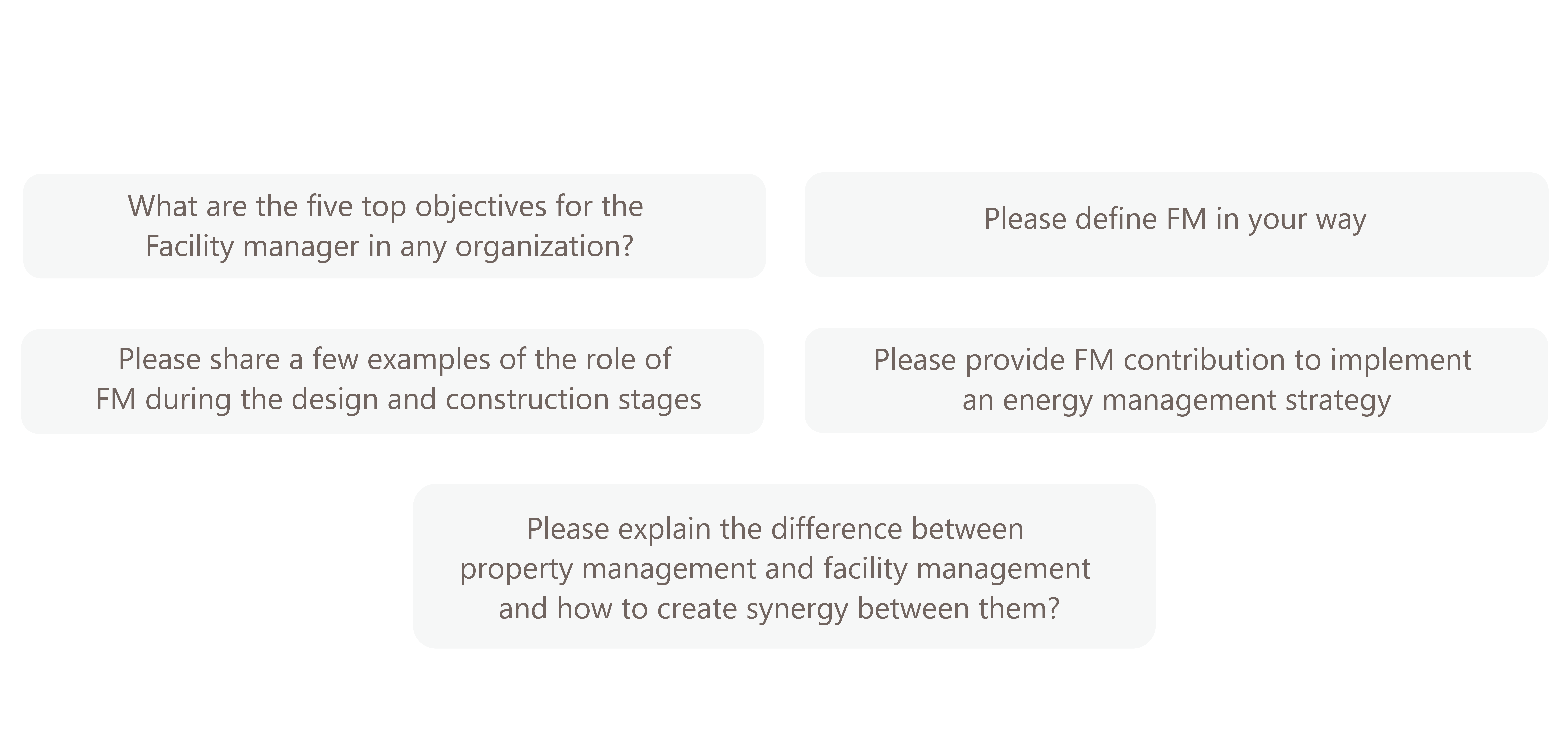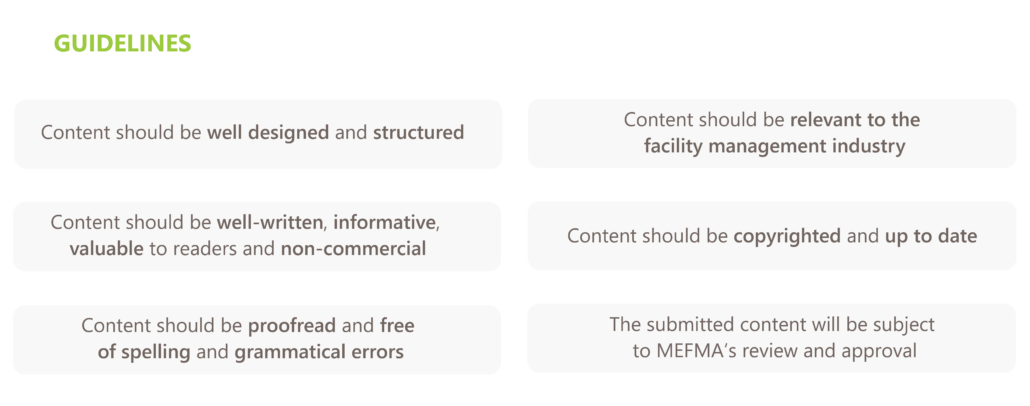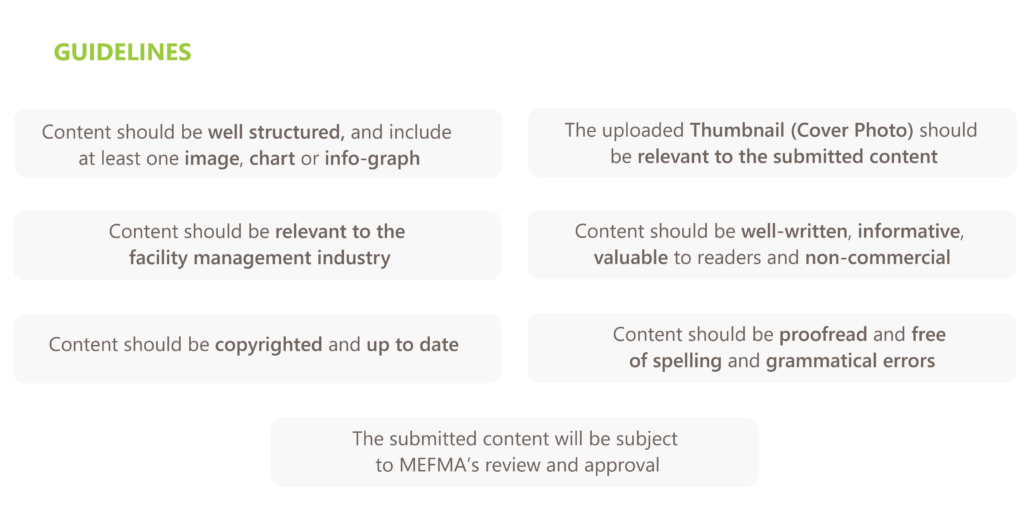Facility Management Sector Towards Achieving All UN SDGs
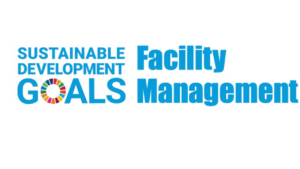
The United Nations Sustainable Development Goals (SDGs) serve as a global roadmap to address the world’s most pressing challenges, including poverty, climate change, and hunger. Additionally, Buildings are responsible for more than 40% of Global Greenhouse Emissions, Facility management plays a crucial role in achieving these goals, particularly when it comes into creating a sustainable built environment. This article explores how facility management contributes to the implementation of SDGs through day-to-day activities, processes, and procedures. Additionally, it highlights the importance of adapting key performance indicators (KPIs) to better align with SDG goals and objectives.
Achieving all 17 SDGs Goals would be as follows:
Goal 1: No Poverty, through various initiatives. One way is by creating job opportunities and providing fair wages to facility staff, thus helping to alleviate poverty within the community. Additionally, facility management can collaborate with local organizations and support initiatives that aim to uplift marginalized and economically disadvantaged individuals. By implementing inclusive employment practices, providing skill development programs, and supporting social enterprises, facility management can make a positive impact towards reducing poverty and improving the economic well-being of individuals and communities.
Goal 2: Zero Hunger, by implementing sustainable food management practices. This can include reducing food waste through proper inventory management, implementing composting programs, and donating excess food to local food banks or charitable organizations. Facility management can also support community gardens or urban farming initiatives within their facilities, providing access to fresh and nutritious food for employees or local communities. By promoting sustainable and responsible food practices, facility management can help reduce food insecurity and contribute to the goal of zero hunger.
Goal 3: Good Health and Well-being, in several ways:
1. Ensure a Safe and Healthy Environment: Facility managers are responsible for maintaining a safe and healthy environment within their facilities. This includes regular inspections, maintenance of equipment and systems, and implementation of proper safety measures. By creating and maintaining a safe and healthy environment, facility managers contribute to the well-being of occupants and visitors.
2. Implement Health and Wellness Programs: Facility managers can develop and implement health and wellness programs within their facilities. This may include promoting healthy eating options, providing fitness facilities or incentives for physical activity, offering mental health support services, and organizing educational campaigns on various health topics. These programs can help improve the overall health and well-being of occupants.
3. Enhance Accessibility: Facility managers can ensure that their facilities are accessible to all individuals, including those with disabilities or special needs. This may involve installing ramps, elevators, and other accessibility features, designing inclusive restrooms, and providing appropriate signage. By enhancing accessibility, facility managers contribute to promoting equal access to healthcare facilities and services.
4. Emphasize Cleanliness and Hygiene: Facility managers can prioritize cleanliness and hygiene within their facilities. This includes regular cleaning and disinfection of common areas, restrooms, and high-touch surfaces. By maintaining a clean and hygienic environment, facility managers contribute to preventing the spread of infections and promoting good health among occupants.
Goal 4: Quality Education through various initiatives. One way is by creating conducive learning environments within educational institutions. Facility managers can ensure that classrooms, libraries, and other educational spaces are well-maintained, safe, and equipped with necessary resources. They can also collaborate with educators to develop innovative and interactive learning spaces that enhance student engagement and promote effective teaching practices. On the other hand, International Facility Management Association and similar bodies started to launch accredited programs for facility managers to help them to develop FM industry and contribute positively to the built environment.
Goal 5: Gender Equality, by promoting equitable and inclusive spaces within organizations. Facility managers can create gender-neutral facilities, such as restrooms and changing rooms, that cater to the diverse needs of all individuals. This helps in addressing gender-related concerns and ensuring equal access and opportunities for everyone.
Furthermore, facility managers can collaborate with HR departments to implement policies and programs that promote gender equality, such as training sessions on unconscious bias and gender sensitivity. They can also play a role in supporting work-life balance initiatives, such as implementing childcare facilities or flexible working hours, which can help alleviate gender disparities in the workplace.
Goal 6: Clean Water and Sanitation by implementing several strategies. Here are a few ways facility management can contribute:
1. Water Conservation: Facility managers can implement water-efficient fixtures and practices, such as low-flow toilets, faucets, and sensor-based systems that help reduce water consumption. They can also ensure regular maintenance and prompt repairs of plumbing systems to prevent leaks and water wastage.
2. Water Treatment: Facility managers can implement proper water treatment processes to ensure that the water provided within the facility is safe and meets quality standards. This can include regular testing, filtration systems, and disinfection methods to remove contaminants and ensure clean drinking water.
3. Waste Management: Facility managers can establish effective waste management systems within the facility to prevent pollution of water sources. This can involve proper storage, recycling, and disposal of hazardous materials, as well as implementing waste reduction and recycling programs.
4. Education and Awareness: Facility managers can educate employees, visitors, and occupants about the importance of water conservation and sanitation practices. This can be done through awareness campaigns, signage, and training programs that promote responsible water use, proper handwashing, and hygiene practices.
Goal 7: Affordable and Clean Energy through various strategies:
1. Energy Efficiency: Facility managers can implement energy-efficient technologies and practices within their premises. This can involve using energy-efficient lighting, HVAC systems, and appliances, as well as optimizing energy consumption through smart building management systems.
2. Renewable Energy Integration: Facility managers can explore and invest in renewable energy sources such as solar, wind, or geothermal power. This can involve installing solar panels or wind turbines on the facility’s roof or grounds to generate clean and affordable energy.
3. Energy Monitoring and Management: Facility managers can implement energy monitoring systems to track energy consumption and identify areas for improvement. This can involve using energy management software or smart meters to measure and analyze energy usage and make data-driven decisions to optimize energy efficiency.
4. Energy Conservation Programs: Facility managers can promote energy conservation among employees, visitors, and occupants. This can involve raising awareness about energy-saving practices, encouraging behavior changes, and implementing energy-saving initiatives such as turning off lights and electronics when not in use.
Goal 8: Decent Work and Economic Growth through several strategies:
1. Employee Benefits and Support: Facility managers can prioritize the well-being and satisfaction of their employees by providing fair wages, benefits, and a supportive work environment. This can include offering competitive compensation packages, promoting work-life balance, and providing opportunities for professional development and career advancement.
2. Safety and Health Measures: Facility managers can ensure a safe and healthy work environment for their employees. This can involve implementing safety protocols, conducting regular inspections and maintenance, and providing training and resources to prevent accidents and promote overall well-being.
3. Collaboration with Local Communities: Facility management can actively engage with local communities to foster economic growth and development. This can involve partnering with local businesses, supporting local initiatives, and contributing to community-building efforts, such as job creation and skills development programs.
4. Data-Driven Decision Making: Facility managers can leverage data analytics and technology to make informed decisions that drive economic growth and productivity. This can involve using facility management software to streamline operations, optimize resource allocation, and identify areas for improvement based on data-driven insights.
Goal 9: Industry, Innovation, and Infrastructure by leveraging the Internet of Things (IoT) and smart facility management practices. Here are a few ways:
1. IoT for Monitoring and Maintenance: Facility managers can use IoT devices to monitor and track the performance of various infrastructure elements, such as HVAC systems, lighting, and security systems. Real-time data collected from these devices can help identify maintenance needs, optimize energy consumption, and improve overall operational efficiency.
2. Predictive Maintenance: IoT sensors and data analytics can enable facility managers to implement predictive maintenance strategies. By analyzing real-time data, facility managers can identify potential issues before they become major problems, thereby reducing downtime, minimizing repair costs, and optimizing the use of resources.
3. Smart Asset Management: IoT-enabled asset tracking systems can help facility managers effectively manage their inventory, equipment, and resources. This includes tracking the location and condition of assets in real-time, optimizing their utilization, and automating inventory management processes.
4. Enhanced Safety and Security: IoT devices, such as surveillance cameras, access control systems, and emergency alert systems, can enhance the safety and security of facilities. By utilizing these technologies, facility managers can detect and respond to security breaches or emergencies more effectively, ensuring the well-being of employees and infrastructure.
5. Data-Driven Decision Making: By integrating IoT sensors into various infrastructure components, facility managers can gather valuable data about the performance and usage patterns of these assets. This data can be used to make informed decisions regarding infrastructure upgrades, resource allocation, and operational improvements, ultimately driving innovation and productivity.
By embracing IoT and smart facility management practices, facility managers can improve the efficiency, reliability, and sustainability of their operations, contributing to the achievement of Goal 9 of industry, innovation, and infrastructure.
Goal 10: Reduce Inequalities, by implementing inclusive and accessible practices. Here are some ways facility management can work towards this goal:
1. Accessible Infrastructure: Facility managers can ensure that their buildings and facilities are designed and maintained to be accessible for people with disabilities or special needs. This includes features like ramps, elevators, and accessible restrooms.
2. Inclusive Workspace: Facility managers can create a welcoming and inclusive workspace that promotes diversity and equal opportunities. This can be done by implementing policies and practices that prevent discrimination and promote inclusivity in hiring, promotion, and access to resources.
3. Flexibility in Work Arrangements: Facility managers can support work-life balance and reduce inequalities by offering flexible work arrangements, such as remote work or flexible hours. This can help employees with different needs and responsibilities to effectively participate in the workforce.
4. Training and Development: Facility managers can provide equal access to training and development opportunities for all employees, regardless of their background or position. This can help bridge skill gaps and promote career advancement for underrepresented groups.
Goal 11 Sustainable Cities and Communities by implementing the following strategies:
1. Energy Efficiency: Facility managers can focus on minimizing energy consumption within their facilities by implementing energy-efficient lighting systems, appliances, and HVAC systems. They can also promote energy-saving practices among occupants, such as turning off lights and electronics when not in use.
2. Waste Management: Facility managers can implement effective waste management practices, such as recycling programs and proper waste disposal methods. This includes providing recycling bins, educating occupants on recycling guidelines, and partnering with local recycling facilities.
3. Water Conservation: Facility managers can promote water conservation by implementing water-saving fixtures, such as low-flow toilets and faucets. They can also educate occupants on water-saving practices, such as turning off taps when not in use and reporting any leaks or water wastage.
4. Green Building Certification: Facility managers can aim for green building certifications, such as LEED (Leadership in Energy and Environmental Design), which emphasize sustainable building practices. These certifications consider factors like energy efficiency, water conservation, and indoor air quality.
5. Transportation and Accessibility: Facility managers can encourage sustainable transportation options by providing facilities for bicycle parking or electric vehicle charging stations. They can also promote public transportation use and carpooling among occupants to reduce carbon emissions.
6. Green Spaces: Facility managers can incorporate green spaces within their facilities, such as rooftop gardens or indoor plants. These green spaces contribute to improved air quality, provide opportunities for relaxation, and promote biodiversity within urban areas.
7. Community Engagement: Facility managers can engage with the local community to promote sustainability initiatives. This can include organizing events, workshops, or educational campaigns to raise awareness about sustainable practices and encourage community involvement.
Goal 12: Responsible Consumption and Production by implementing several strategies:
1. Waste Management: Facility managers can implement effective waste management practices, such as recycling programs, composting, and proper disposal methods. This helps reduce waste generation and promotes responsible consumption.
2. Energy Efficiency: Facility managers can focus on improving energy efficiency by implementing energy-saving technologies, utilizing renewable energy sources, and optimizing building systems. This reduces the overall energy consumption and promotes sustainable production practices.
3. Procurement Policies: Facility managers can adopt sustainable procurement policies which prioritize the use of environmentally-friendly products and materials. This includes selecting suppliers that align with responsible production practices and minimizing the use of harmful substances.
4. Monitoring and Reporting: Facility managers can track and monitor resource consumption within their facilities, such as water, energy, and materials. By regularly reporting on these metrics, they can identify areas for improvement and take necessary actions to promote responsible consumption and production.
Goal 13: Climate Action by implementing the following strategies:
1. Energy Efficiency: Facility managers can focus on reducing energy consumption and promoting the use of renewable energy sources within their facilities. This can be achieved through the implementation of energy-saving technologies, efficient building systems, and renewable energy installations.
2. Sustainable Transportation: Facility managers can encourage sustainable transportation practices among employees and visitors, such as promoting carpooling, cycling, or using public transportation. They can also provide electric vehicle charging stations and prioritize the use of clean vehicles for transportation needs.
3. Waste Management: Facility managers can implement effective waste management systems that minimize waste generation, promote recycling and composting, and reduce reliance on landfills. They can also explore innovative solutions, such as waste-to-energy technologies.
4. Green Building Practices: Facility managers can adopt green building practices, such as incorporating energy-efficient materials, optimizing HVAC systems, and utilizing smart technologies for monitoring and controlling energy usage. This can help reduce greenhouse gas emissions associated with building operations.
5. Land and Water Management: Facility managers can implement sustainable land and water management practices within their premises. This includes preserving green spaces, implementing rainwater harvesting systems, and minimizing water usage through efficient plumbing fixtures and landscaping techniques.
6. Collaboration and Partnerships: Facility managers can collaborate with stakeholders, such as suppliers, contractors, and local communities, to foster collective action in addressing climate change. This can include joint projects, sharing best practices, and participating in collaborative initiatives.
Goal 14: Life Below Water, by adopting sustainable practices and implementing measures to protect and preserve marine ecosystems. Here are some strategies that facility managers can employ:
1. Waste Management: Facility managers can implement effective waste management systems to ensure that waste generated within the facility does not end up in oceans or other bodies of water. This can include proper sorting, recycling, and disposal methods.
2. Chemical and Hazardous Materials Management: Facility managers can ensure that chemicals and hazardous materials used within the facility are properly stored, handled, and disposed of to prevent contamination of water bodies. This can include implementing proper labeling, training employees on safe handling practices, and adhering to relevant environmental regulations.
Goal 15: Life on Land, facility managers can implement the following strategies:
1. Ecosystem Restoration: Facility managers can take steps to restore and rehabilitate degraded ecosystems within and around their facilities. This can include reforestation efforts, wetland restoration, and the reintroduction of native plant and animal species.
2. Biodiversity Conservation: Facility managers can prioritize the conservation of biodiversity by implementing measures to protect and preserve species and their habitats. This can involve creating wildlife habitats, implementing biodiversity action plans, and minimizing disturbance to natural areas.
3. Sustainable Land Use: Facility managers can promote sustainable land use practices within their operations. This can include reducing or eliminating the use of harmful pesticides and fertilizers, practicing responsible land management, and promoting sustainable agriculture and forestry practices.
Goal 16: Peace, Justice, and Strong Institutions, through various strategies:
1. Conflict Resolution: Facility managers can implement conflict resolution measures within their facilities to address disputes and promote peace among employees or visitors. This can involve establishing mediation processes, providing training in conflict resolution techniques, and fostering a positive and inclusive work environment.
2. Stakeholder Engagement: Facility managers can engage with stakeholders, such as local communities, employees, and governing bodies, to ensure transparency, accountability, and participation in decision-making processes. This can help build trust, promote social cohesion, and contribute to the development of strong institutions.
3. Compliance and Ethics: Facility managers can establish and enforce ethical policies and codes of conduct within their facilities. This can involve promoting integrity, preventing corruption, and ensuring compliance with legal and regulatory requirements. By fostering a culture of ethical behavior, facility managers contribute to the strengthening of institutions and justice.
4. Accessible Facilities: Facility managers can ensure that their facilities are accessible to all individuals, regardless of their backgrounds or abilities. This includes providing facilities and services that accommodate people with disabilities, ensuring equal opportunities for all, and supporting inclusion and diversity.
Goal 17: Partnership for the Goals, by actively engaging in collaborations and partnerships. Here are a few ways facility managers can achieve this goal:
1. Engage with Stakeholders: Facility managers can identify key stakeholders, such as government agencies, non-profit organizations, and community groups, and actively involve them in decision-making processes related to facility management. This can help build strong partnerships and promote collaboration towards achieving common goals.
2. Participate in Multi-stakeholder Initiatives: Facility managers can participate in multi-stakeholder initiatives that focus on sustainable development and goal-oriented projects. By joining forces with other organizations and sharing resources, knowledge, and expertise, facility managers can contribute to achieving the targets of Goal 17.
3. Support Sustainable Development Programs: Facility managers can support and promote sustainable development programs within their facilities. This can involve implementing energy-efficient practices, waste reduction measures, and environmentally friendly initiatives. By doing so, facility managers demonstrate their commitment to sustainable development and contribute to Goal 17.
4. Foster Innovation and Technology Transfer: Facility managers can explore innovative solutions and technologies that align with the goals of sustainable development. By adopting and implementing these innovations, facility managers can contribute to the transfer of technology and knowledge-sharing, which is essential for achieving Goal 17.
5. Share Best Practices: Facility managers can actively share their successful practices and experiences with other organizations, both locally and globally. This can be done through conferences, workshops, publications, or online platforms. By sharing knowledge and best practices, facility managers can inspire and guide others towards achieving the targets of Goal 17.
Conclusion:
Facility management plays a pivotal role in implementing and achieving SDGs in day-to-day activities, processes, and procedures. By promoting sustainable infrastructure, waste management, health and safety, accessibility, and partnerships, facility managers contribute to building a sustainable future. Adapting KPIs to align with SDG goals ensures effective monitoring and continuous improvement towards meeting these global objectives. Through these efforts, facility management actively contributes to the UN’s vision of a more sustainable and inclusive world.
16/08/2023
Mohamed Abdelhamied Bakhit

